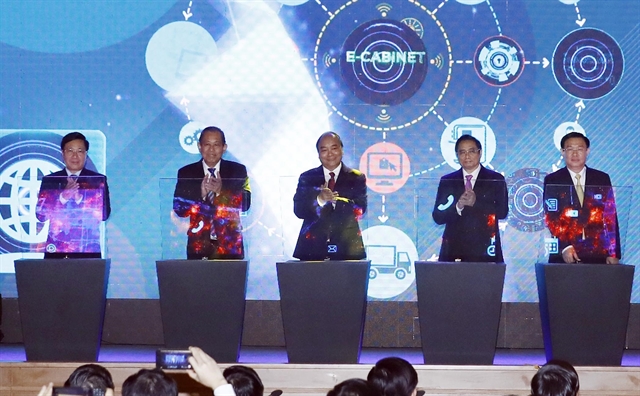 Politics & Law
Politics & Law


|
| Prime Minister Nguyễn Xuân Phúc (centre) presses a button to launch the E-Cabinet system, an information system to manage the meetings and paperwork of the Government, yesterday. VNA/VNS Photo Thống Nhất |
The system can enhance connectivity and information exchange among Cabinet members as they can discuss issues before meetings, saving time and costs and making information transparent.
Cabinet members who are absent from meetings can still voice opinions and vote on issues through mobile devices.
Further, the e-Cabinet system can automatically send text messages or emails to remind Cabinet members of meetings or deadlines, according to Dũng.
The system aims to cut 30 per cent of time spent on Government meetings and minimise the use of some paper documents which will be replaced with electronic ones.
The move is expected to help provide better services for citizens and enterprises.
Dũng said "if the work is done well, it could also help prevent petty corruption," adding that such corruption creates hurdles for businesses and start-ups and raises costs.
He noted a tight process was necessary to ensure the effective use of the system.
The official stressed e-governance meant carrying out administrative reform, which would require dedication and the elimination of personal interests.
Dũng said the Government Office had worked with Viettel and other firms to hold training courses for Cabinet members and their aides.
He said the Government had set out requirements and paid for services developed by enterprises with advanced technologies, skilled technicians, a developed infrastructure and an understanding of developed countries’ e-Cabinet systems.
The Government Office also consulted domestic and foreign experts on the system before putting it into operation. — VNS